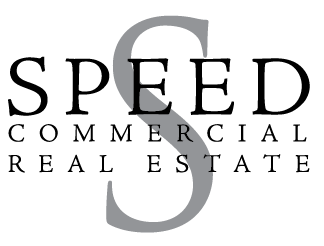Understanding how to calculate rent per square foot in commercial real estate is crucial for both tenants and landlords. Rent per square foot serves as a benchmark for comparing properties and making informed leasing decisions. Whether you are negotiating a new lease or evaluating an existing one, mastering this calculation ensures you grasp the a critical aspect of the financial implications of your commercial lease agreement.
In this blog post, we will guide you through the essential steps for calculating commercial rent per square foot, breaking down the process from foundational concepts to detailed calculation methods.
Glossary of Key Terms
Before we delve into the specifics of calculating rent per square foot, let’s clarify some key terms you will encounter throughout this guide. Understanding these terms is essential for navigating the complexities of commercial real estate leases.
- Rent per Square Foot: This is the annual or monthly rental rate applied to each square foot of a commercial space. It helps in comparing the cost of different properties regardless of their total size. This is often shortened to $/SF/YR (for annual rates) and $/SF/MO (for monthly rates).
- Base Rent: The minimum rent that a tenant pays for the space, excluding any additional costs like maintenance, taxes, and insurance, which may be included depending on the lease agreement.
- Usable Square Footage (USF): This refers to the actual area a tenant occupies exclusively. It does not include shared spaces such as lobbies, restrooms, and hallways.
- Rentable Square Footage (RSF): This includes the Usable Square Footage plus a proportionate share of the building’s common areas that all tenants use, such as lobbies, restrooms, and hallways.
- Triple Net (NNN): A lease agreement where the tenant is responsible for paying three additional costs: property taxes, insurance, and maintenance, along with their base rent. These costs are typically based on the tenant’s proportionate share of the building.
- Full Service Gross (FSG): A lease type where the rent includes all operating expenses associated with the property. The landlord pays these expenses, which might include utilities, property taxes, insurance, and maintenance from the rent received.
- Modified Gross (MG): A flexible lease agreement where the tenant pays base rent plus some, but not all, of the operating expenses. Which expenses are tenant responsibilities varies and should be specified in the lease agreement.
Foundational Concepts in Commercial Rent
Commercial rent is more than just the monthly payment made by a tenant to a landlord. It’s a structured financial arrangement that incorporates several components, crucial for both parties to understand fully.
The primary component is base rent, which is the fundamental charge associated with leasing the property, usually calculated on a per square foot basis. However, commercial leases often include additional costs, which can cover property taxes, insurance, maintenance, and utilities, varying widely depending on the lease type.
The calculation of rent per square foot is particularly important in commercial real estate due to the nature of how spaces are utilized and configured. This method offers a standardized metric that allows potential tenants to compare different properties efficiently. It reflects the flexibility of commercial real estate, where spaces might be divided into smaller units or combined into larger ones depending on business needs.
Calculating rent per square foot provides a clear basis for these adjustments, ensuring that tenants pay an equitable price for the space they are actually using, regardless of the building’s total size or configuration. This flexibility is essential in a market where business needs are constantly evolving, requiring spaces that can adapt to varying demands.
Calculating Rent Per Square Foot
Calculating the rent per square foot is a crucial skill for anyone involved in commercial real estate, whether you are a tenant negotiating a lease or a landlord setting prices. Here’s how you can calculate the total annual rent from the price per square foot:
Formula for Calculating Total Annual Rent
Total Annual Rent = Price Per Square Foot * Total Square Footage
- Determine the Price Per Square Foot: This is usually provided by the landlord or leasing agent and represents the cost per square foot per year.
- Measure the Total Square Footage: This is the total area you will be renting.
- Calculate the Total Annual Rent: Multiply the price per square foot by the total square footage.
Total Annual Rent = Price Per Square Foot \times Total Square Footage
Example Calculation
Suppose the price per square foot is $25, and the total square footage of the commercial space you are interested in is 2,000 square feet.
Total Annual Rent = $25/sq ft x 2,000 sq ft = $50,000 per year
Converting Annual Rent to Monthly Rent
To find out how much this equates to on a monthly basis, simply divide the total annual rent by 12 (the number of months in a year).
Monthly Rent = Total Annual Rent / 12
Using our previous example:
Monthly Rent = $50,000 / 12 = $4,166.67 per month
Usable vs. Rentable Square Footage Explained
In commercial real estate, accurately calculating and understanding the difference between Usable Square Footage (USF) and Rentable Square Footage (RSF) is critical for comparing properties and ensuring fair rent calculations. These two metrics determine how much space a tenant is actually paying for and what they can exclusively use.
Usable Square Footage (USF)
USF refers to the actual area within a property that a tenant can exclusively use. It does not include shared spaces such as lobbies, restrooms, and hallways. For instance, if a tenant leases a specific office suite, the USF would include only the interior of that suite where the tenant conducts their business activities.
Rentable Square Footage (RSF)
RSF encompasses not only the USF but also a proportionate share of the building’s common areas that all tenants use. This is calculated using the common area factor (CAF), which is the percentage of the total building area made up of common spaces. The formula for RSF is straightforward:
RSF = USF + (USF × CAF)
How Common Areas Affect These Calculations
Common areas — such as hallways, restrooms, and other shared facilities — are included in the RSF but not the USF. The cost of maintaining these areas is typically distributed among all tenants, reflected in their RSF calculations.
Practical Examples
To illustrate the application of USF and RSF calculations, consider these scenarios:
- Office Building: An office building with a total of 100,000 square feet includes 20,000 square feet of common areas, making the CAF 20%. For a tenant with 10,000 square feet of USF:
- RSF for Tenant = 10,000 sq ft + (10,000 sq ft * 20%) = 12,000 sq ft.
- The tenant effectively pays for an additional 2,000 square feet, representing their share of the common areas.
- Retail Space: In a strip mall where each store has direct public access and no shared internal spaces, a tenant with 3,000 square feet of USF will have the same RSF since there is no CAF applied:
- RSF for Tenant = USF = 3,000 sq ft.
- The tenant pays only for the space they occupy directly, as common areas like parking lots are typically not included in the RSF.
Lease Structures and Their Impact on Rent Calculation
In commercial real estate, the structure of the lease can significantly affect how rent is calculated and what expenses are included. Understanding the differences between the three primary types of commercial leases—Triple Net (NNN), Full Service Gross (FSG), and Modified Gross (MG)—is crucial for tenants and landlords alike. Here’s how each lease type impacts the rent calculation:
Triple Net (NNN) Lease
Description: In a Triple Net Lease, the tenant is responsible for paying the base rent plus additional costs for maintenance, property taxes, and building insurance. This type of lease typically shifts most of the expense burden to the tenant.
Hypothetical Scenario:
- Base Rent: $20 per square foot
- Additional Costs (NNN): $5 per square foot for maintenance, $3 for taxes, and $2 for insurance
- Total Cost Per Square Foot: $20 (Base Rent) + $5 (Maintenance) + $3 (Taxes) + $2 (Insurance) = $30 per square foot
Full Service Gross (FSG) Lease
Description: An FSG lease is all-inclusive, meaning the landlord pays for all property-related expenses. The tenant pays one flat rate that covers both the base rent and all operating expenses.
Hypothetical Scenario:
- All-inclusive Rent: $35 per square foot, covering rent, maintenance, taxes, and insurance
- Total Cost Per Square Foot: $35 per square foot (no additional costs beyond the quoted rent)
Modified Gross (MG) Lease
Description: A Modified Gross Lease is a flexible agreement where the tenant pays base rent and certain operating expenses, while the landlord covers others. The specific expenses covered by the tenant can vary based on the lease agreement.
Hypothetical Scenario:
- Base Rent: $25 per square foot
- Tenant’s Responsibilities: Maintenance and utilities estimated at $4 per square foot
- Landlord’s Responsibilities: Taxes and insurance
- Total Cost Per Square Foot: $25 (Base Rent) + $4 (Maintenance and utilities) = $29 per square foot
Comparative Impact on Rent Calculation
The impact of these different lease structures on rent calculation can be substantial:
- Triple Net (NNN): This lease offers the lowest base rent but includes additional costs that can significantly increase the total expense for the tenant.
- Full Service Gross (FSG): Provides predictability in budgeting since all costs are included in a single rate, which is typically higher to cover the comprehensive expenses.
- Modified Gross (MG): Offers a middle ground, allowing both parties to negotiate which expenses are covered by whom, providing flexibility but requiring clear communication and understanding of lease terms.
Each lease type has its advantages and challenges, depending on the tenant’s and landlord’s financial strategies and preferences for handling property expenses. When choosing a lease type, it is crucial to consider not only the base rent but also the total cost of occupancy, which includes all additional expenses under the terms of the lease.
Final Thoughts
Every business has unique needs when it comes to renting commercial spaces, and figuring everything out on your own may not always the best solution.
When you need personalized advice or assistance with any aspect of commercial real estate, don’t hesitate to reach out to our team at Speed Commercial Real Estate. We are here to help you navigate your commercial real estate decisions with confidence.
Contact us today to ensure your next commercial lease aligns perfectly with your business objectives.

